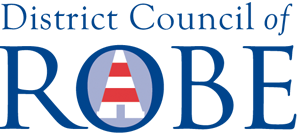Noise
Noise affects most of us at some time. Noise may become annoying if it intrudes into peoples awareness or is heard against their wishes. Noise that disrupts people's activities may be considered an enviornmental nuisance. The enforcement of noise regulations is generally based upon complaints from people affected by noise, so it is usually in your best interests as a neighbour or business operator to take steps to minimise the noise you make and to limit noisy acitivites to the times of the day or night and noise levels specified in the Environment Protection (Noise) Policy 2007.
Noise ControlThe Enviornment Protection Authority (EPA) plays an important role in monitoring and regulating noise pollution from premises licensed under the Environment Protection Act and some large industrial activities. While Section 25 of the Enviornment Protection Act 1993, requires all South Australians to prevent or minimise environmental harm that may be caused by excessive noise - noise issues are further regulated by the Environment Protection (Noise) Policy 2007. The Noise Policy affects everyone including business licensed under the Environemtn Protection Act 1993, non-licensed and domestic premises.
Help with noise not regulated by EPA
- 'People' noise
This includes noise from parties, loud radios or stereos and revving cars. Contact your local police station - 'Animal' noise
For barking dogs, noisy birds etc. contact the Council - 'Liquor Licensed premises
For noise from pubs, nightclubs and other premises licensed under the Liquor Licensing Act 1997. Contact the Office of the Liquor and Gambling Commissioner - Noise in the workplace
For detail on legislative requirements contact Safework SA. For more information on noise control in the workplace contact Workcover.
Resolving neighbourhood noise complaints
There are a variety of common noise sources that may cause an environmental nuisance, such as power tools, compressors, lawnmowers and domestic air conditioners.
Issues such as these are best resolved by working together with your neighbour. Disputes that are settle without involving an enforcement agency usually result in firendlier ongoing relationships and often provide more effective solutions.
Construction noiseSome activities on building sites can generate significant amounts of noise. Construction activities are limited to between 7.00 am and 7.00 pm from Monday to Saturday and not at all on Sundays/Public Holidays.
Insanitary Conditions
Under the Public and Environmental Health Act 1987, insanitary condition means that the premises may give rise to a risk to health, pose a risk of infestation by rodents or other pests or emit offensive material or ordours.
Head Lice
Head lice are partial to anybody with hair. Lice do not jump, hop or fly. People become infected by direct contact from one persons head to another. Lice may move onto hats, combs, helmets, hair ties and other surfaces, but must return to a human head to survive within 24 hours. Head lice do not live in carpets, sandpits or on animals. Not everbody infected with head lice will itch so you must look for lice and eggs (nits). Adult head live are the size of tiny ants and range in colour from skin-tone to dark brown. Head live have claws on the end of each of their six legs. These claws grasp the hair with such strength that it makes the head lice difficult to dislodge. Nits are the eggs laid by female lice are are the size and colour of a grain of sugar. Heat generated by the body hatches eggs. Eggs are laid very close to the scalp and stick like glue to the hair. They hatch within seven days. The earlier the lice are identified and treated the less time there is for eggs to hatch.
Treatment and Prevention
Wet Combing Technique: Firstly apply conditioner to dry hair. This weakens the drip of the lice so they are more easily removed. Comb the hair with a special head lice comb and look for the lice by wiping the comb onto a tissue. This should be repeated three times a week for three weeks.
Chemical Treatment: There are four different types of head lice treatments available. All have different main ingredients: pyrethrins, synthetic pyrethrins, malathion and herbal agents. If a head lice problem continues after treatment, try a product with a different main ingredient.
No one head lice treatment will kill 100 per cent of the eggs. You must use the treatment seven days after the first treatment to kill any lice that may have hatched. Removal of eggs must be done following an application of head lice treatment. Eggs can be removed by combing the hair with a special head lice comb or with the fingernails. If eggs are not removed the problem may reoccur.
Lice live on strands of hair, but they move to the scalp to feed. It is important that ll of the hair is completely covered with the head lice treatment and is used according to instructions. Wash combs, brushes, towels, hats and bed linen in detergent and hot water. Lice can be weakened by thouroughly brushing hair morning and night. When injured or weakened, lice have difficulty gripping the hair. Tea tree oil applied to the hair can be used as a preventative measure against infestation.
Get into the habit of checking the hair every time it is washed. Daily checking is necessary if there is an outbrak as itching is not a symptom for everyone. Avoid direct head-tohead contact with others. Do not share hats, combs, hair ties etc. Try to keep long hair tied back or plaited.
It is important to never use treatments as a preventative and never use animal treatments on affected area.
